Team member : Arman Nikkhah, Mohammad Tabatabaei
Mentor : Dr.Zomorodian
Team member : Arman Nikkhah, Mohammad Tabatabaei
Mentor : Dr.Zomorodian
Passive evaporative cooling systems are regarded as low cost and energy efficient strategies in hot and dry climates. Silica gels could be used as an effective evaporative media in evaporative cooling due to their adsorption properties. This research presents a novel evaporative cooling louver shading system using silica gels. The main idea of this research is to add the passive evaporative cooling capability to shadings. For this purpose, Silica gels are inserted in the louvers and placed in a water chamber, turning the louvers into a wet evaporating plate. The shading system is implemented on the indoor side of the window opening, resulting in evaporative cooling. A simulation model is presented to simulate the air temperature and humidity variations considering the shading system, and experimental data collected from the sensors in the test box are used to validate the simulations. A favorable agreement between the experimental and simulation results was obtained, showing the contribution of the proposed system in maintaining a comfortable indoor temperature range inside a room. Based on experimental evaluations in a controlled environment, the shading system reduced the temperature by 5° and increased the relative humidity by approximately 4% after 100 minutes. The simulation results showed that the temperature and the humidity difference after employing the shading system in the test box are up to two degrees and 9%, respectively. Also, the temperature and the humidity difference after employing the system in a room model is 1 degree and 4.5 %. This study provides an alternative solution to integrate the low-grade cooling sources for enhancing the energy-efficiency and decreasing the building energy demand in hot and arid climates.
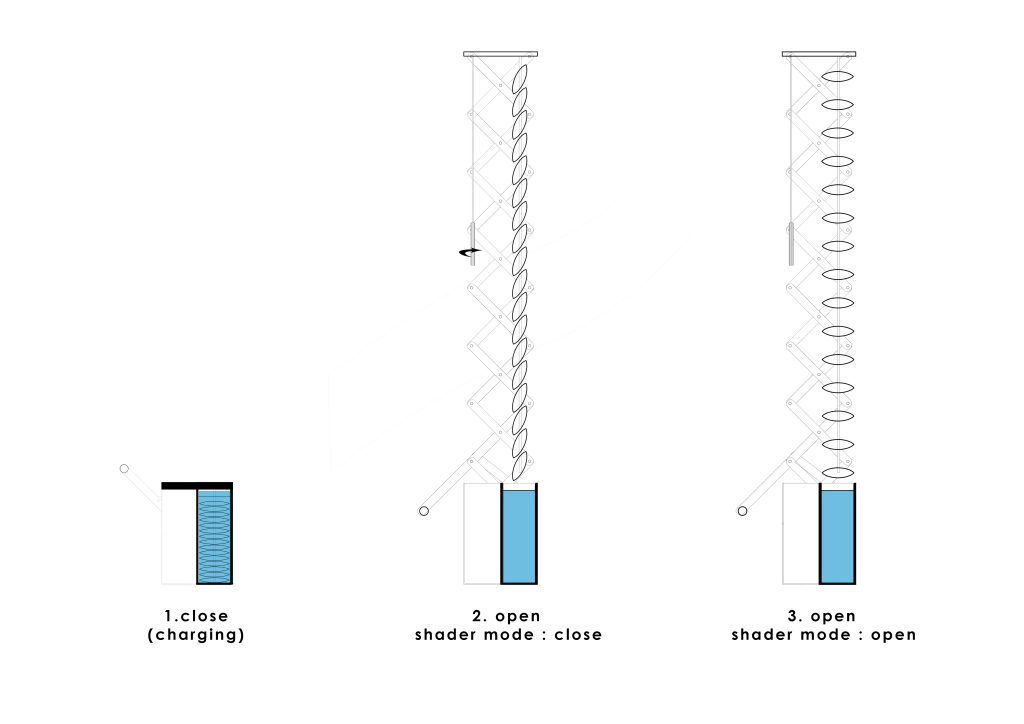
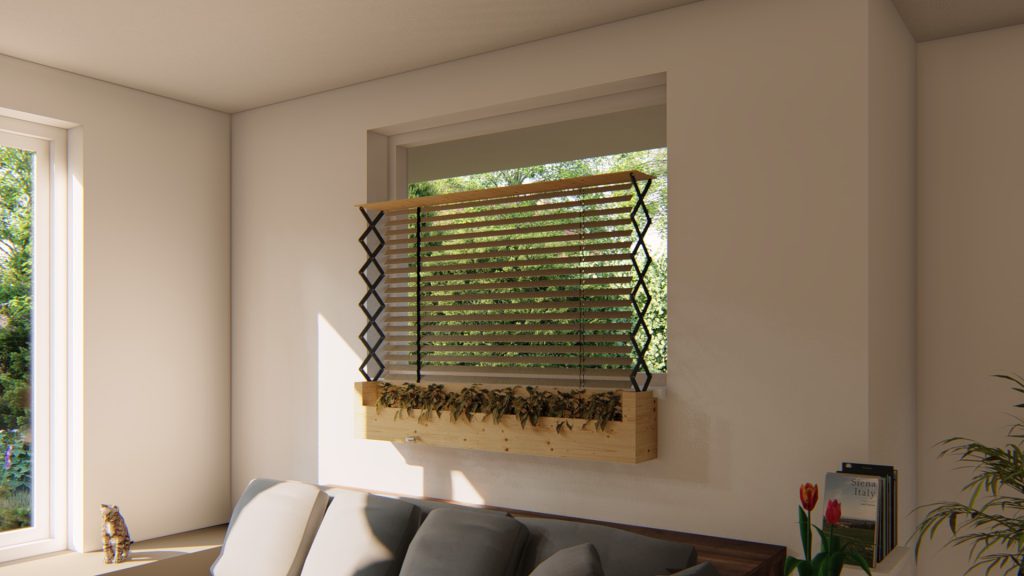
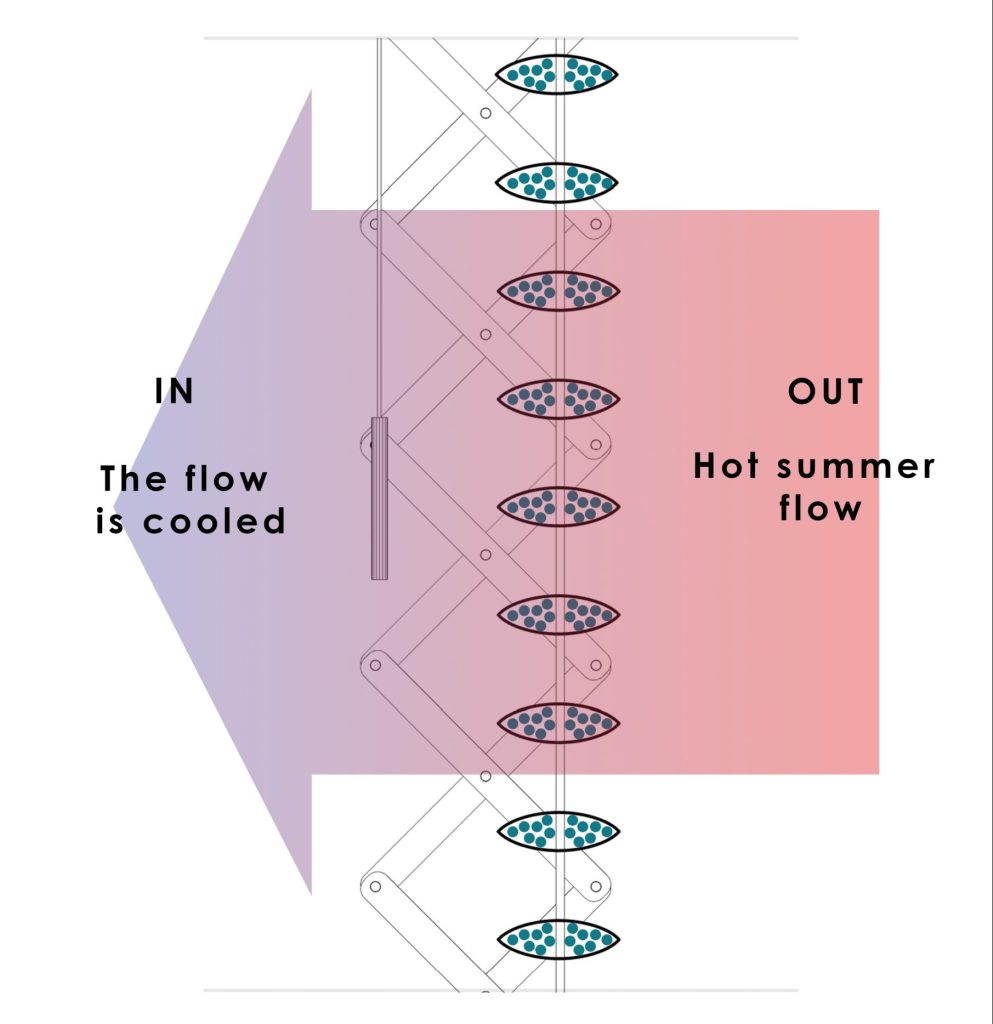
The Evaporative cooling shading system (ESS) consists of horizontal movable Venetian blinds with inserted silica gel packages to provide thermal comfort by heat mitigation in the building. A water chamber filled by the user where blinds are submerged during cooler times of the day so that the silica gels absorb water, and when indoor temperature increases, the blind moves upwards by the scissors structures system to control solar gain and act as a passive evaporative cooler. The angle of each louver can change depending on the light emitted inwards.
The shading system is installed inside the room so that users have good access to them, and the evaporation rate of water is reduced compared to when it is installed outside the window, which increases the system’s efficiency.
To assess the performance of the system, environmental parameters are measured in a test box with and without the shading system in a lab environment. the main application of the ESS is to decrease the ambient temperature and increase the humidity of the environment. The super-absorbents (silica gel) are charged by placing the ESS in the water chamber, and after 2 hours, when the silica gel is charged, the ESS is moisturized and ready to use. The experiment was conducted in a controlled test box in Isfahan, Iran, categorized as BSk (Arid and Semi-Arid) based on the Koppen-Geiger climate classification. Relative humidity and temperature typically vary from23%-60% and -4°C to 39°C. Solar shading and evaporative cooling during 1045 and 2802 hours of the year could be effective strategies to improve thermal comfort in Isfahan.
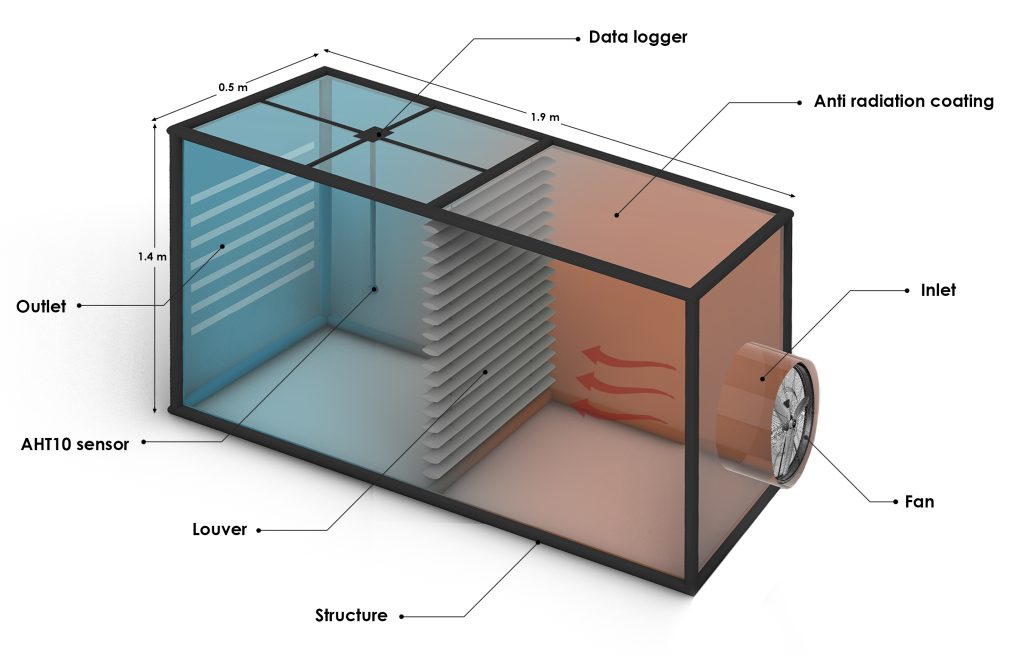
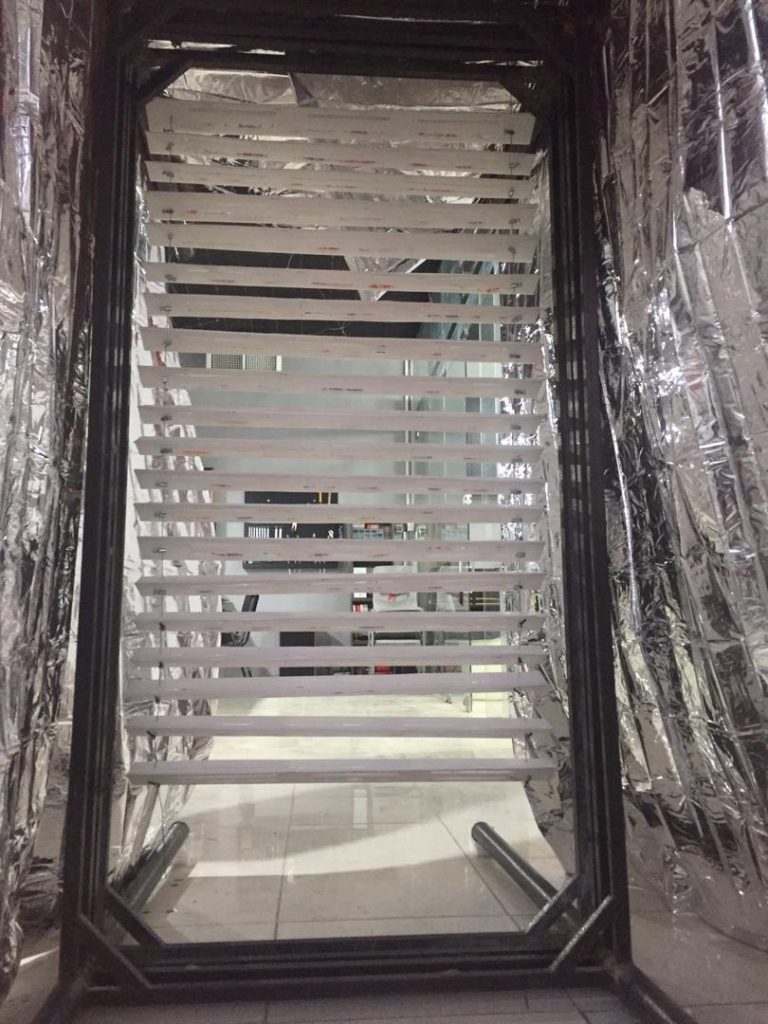
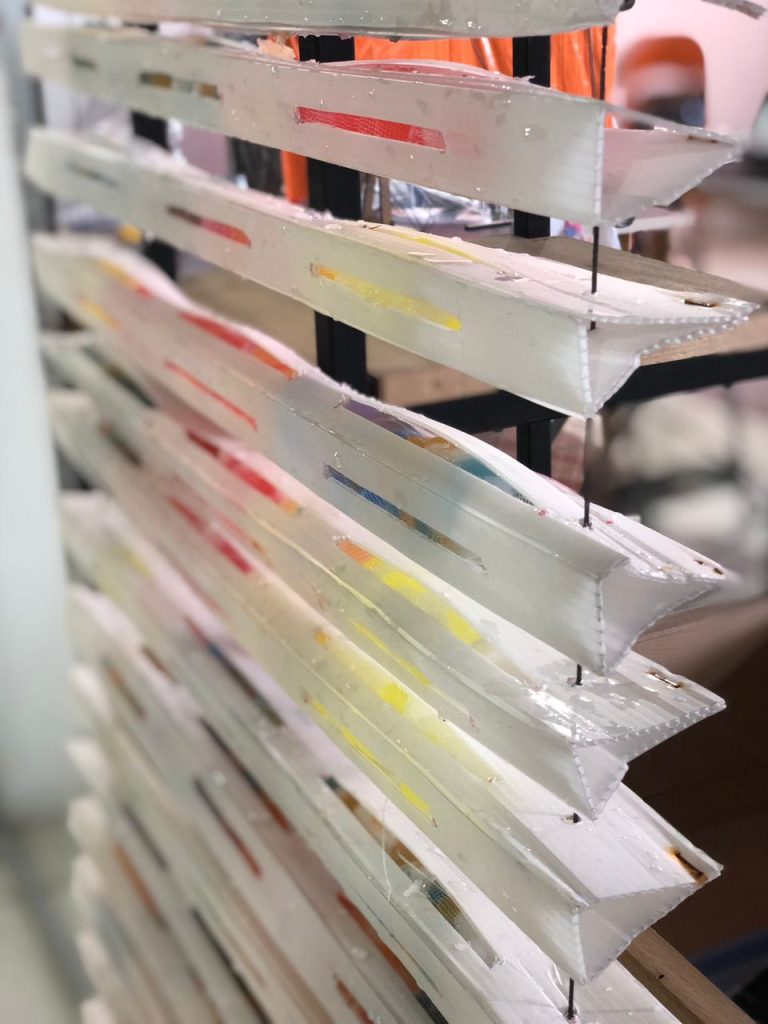
The controlled test box is covered with an anti-radiation coating (silver color) to reduce the effect of ambient radiation. The box is insulated to prevent any energy loss. The box is divided into two equal parts separated by twenty blinds containing silica gel with a temperature of 290 K. Silica gels are placed in corrugated plastic blinds in some bags. The bags are sewn and placed inside the blind so that they are evenly distributed along the louver. Corrugated plastic is used as a non-temperature transfer material to provide minimum changes in the final material properties. Therefore, the temperature reduction would be due to humidification and not heat absorption by the louvers.
The relative humidity inside the box was 7%, and its temperature was 303K. Also, on the left side, an air channel was placed with a speed of 1.5 meters per second with a temperature of 313 K. This fan simulates wind flow rate and temperature of the south window in the context of Isfahan in summer, which enters the test box through a valve that is insulated all around. On the other side of the test box is a porous (perforated) plastic surface that is used as an air outlet in addition to controlling the ambient temperature. During the test time, two AHT10 humidity and temperature measuring connected to an Arduino UNO kit measured dry bulb temperature and relative humidity on both sides of the box. Data are collected every 10 for 100 minutes from the modules and saved by an Arduino data logger).
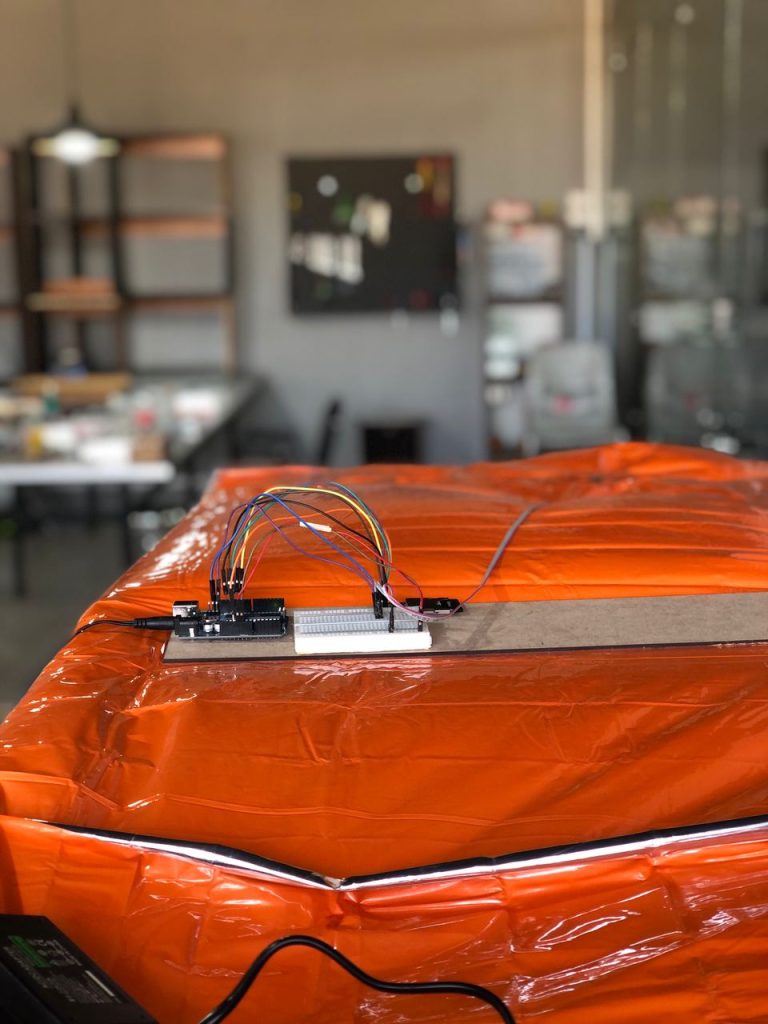
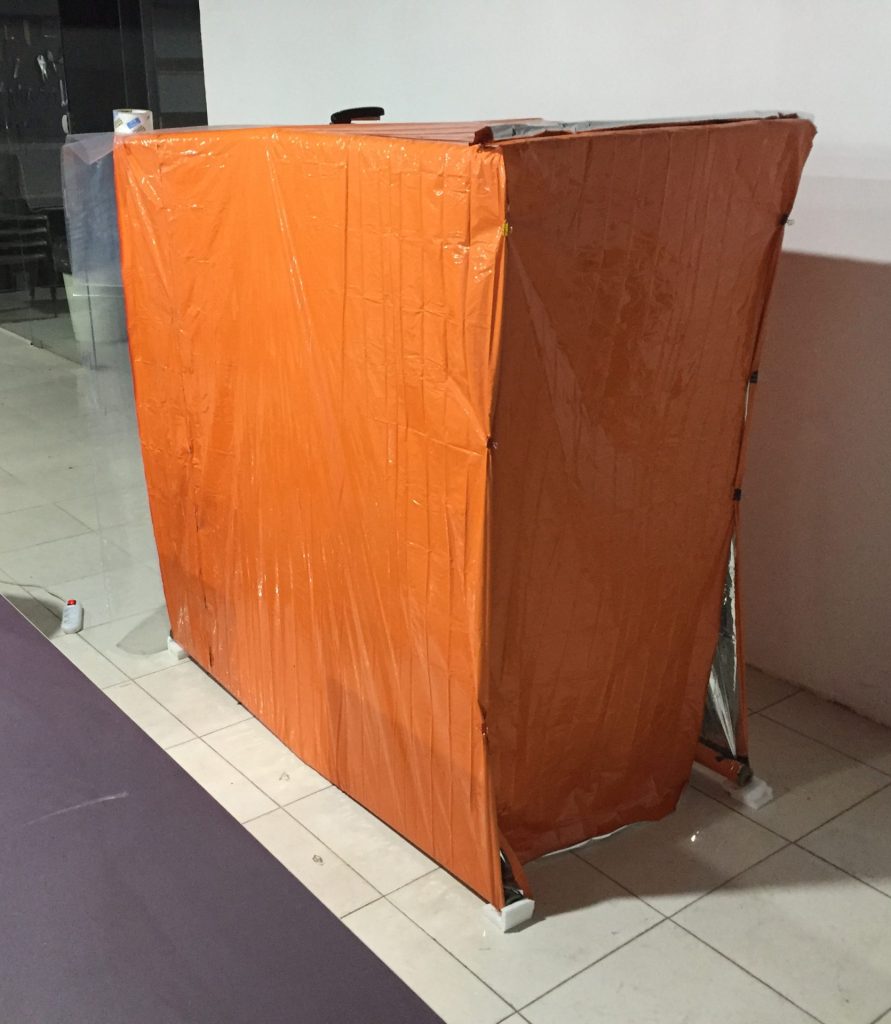
The experiment was performed in the test box model in mid and late summer (August and September) with and without the ESS. The following two charts represent temperature and humidity in the first experiment (i.e., T1 and H1 in August) and temperature and humidity in the second experiment (i.e., T2 and H2 in September).
Based on the result, the two experiments were very close to each other. In both experiments, after hanging the ESS, the temperature of the test medium did not reach the outside temperature (i.e., inlet temperature 313 K) and was fixed at a temperature of about 308 K. also, relative humidity was set in 8-9% in first 100 minutes with hanging the ESS whereas it was fixed in 2-4% without the ESS. The rise and the sudden drop in humidity in the first minutes is the presence of water droplets on the surface of the silica gel due to insertion in the water chamber. However, over time, the effect of humidification and lowering the temperature is fixed. As it can be observed, ESS can increase the relative humidity by about 5% and decrease the temperature by about 5 K on average compared to when the window is open without ESS. Due to low humidity levels in the study context (Isfahan) and the dehumidification method to reduce the temperature, this increase in humidity and decrease in temperature using the passive cooling system is acceptable.
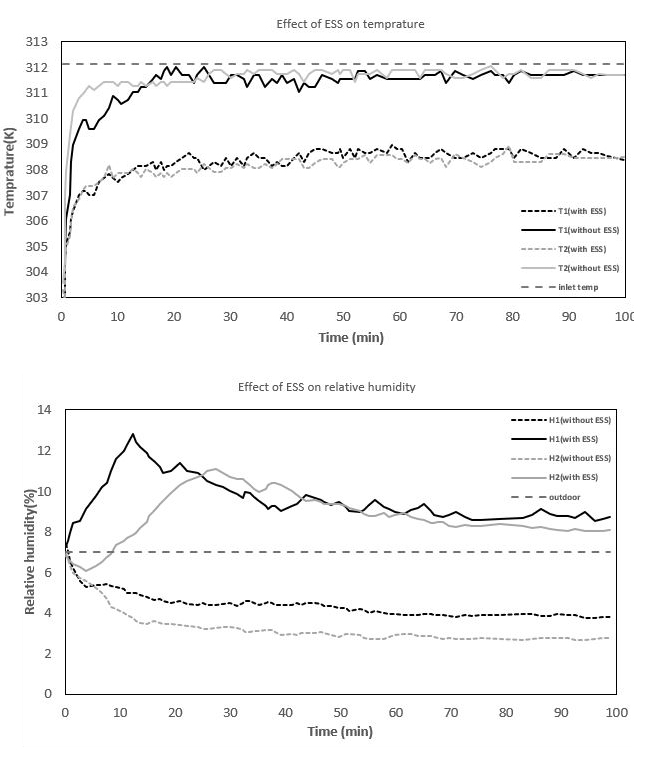
Based on the result, the two experiments were very close to each other. In both experiments, after hanging the ESS, the temperature of the test medium did not reach the outside temperature (i.e., inlet temperature 313 K) and was fixed at a temperature of about 308 K. also, relative humidity was set in 8-9% in first 100 minutes with hanging the ESS whereas it was fixed in 2-4% without the ESS. The rise and the sudden drop in humidity in the first minutes is the presence of water droplets on the surface of the silica gel due to insertion in the water chamber. However, over time, the effect of humidification and lowering the temperature is fixed, and as it can be observed, ESS can increase the relative humidity by about 5% and decrease the temperature by about 5 K on average compared to when the window is open without ESS. Due to low humidity levels in the study context (Isfahan) and the dehumidification method to reduce the temperature, this increase in humidity and decrease in temperature using the passive cooling system is acceptable.
NOTE: Currently, to validate the experimental test, a test with similar specifications is being conducted in Camsol software, the results of which will be published soon.

